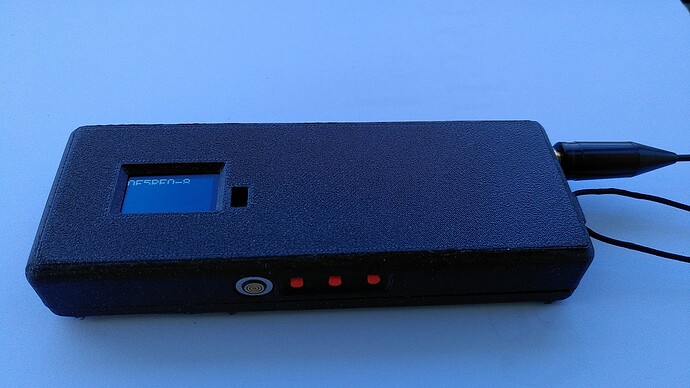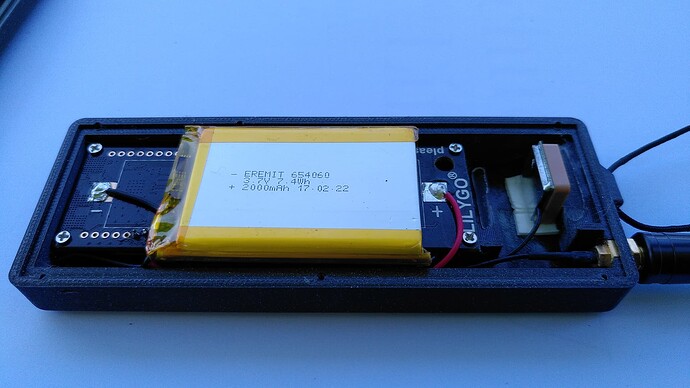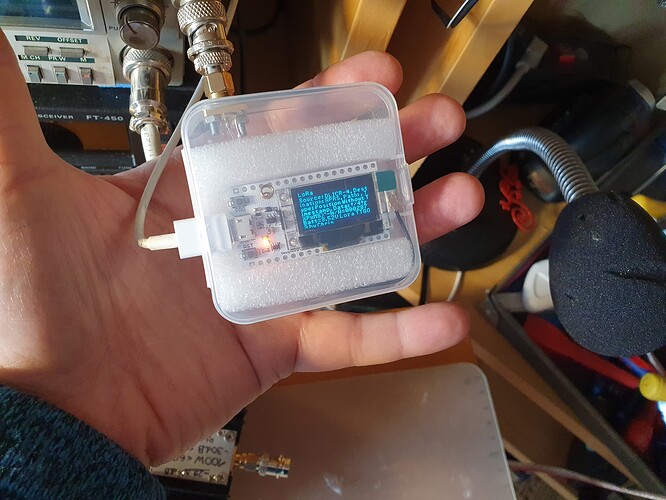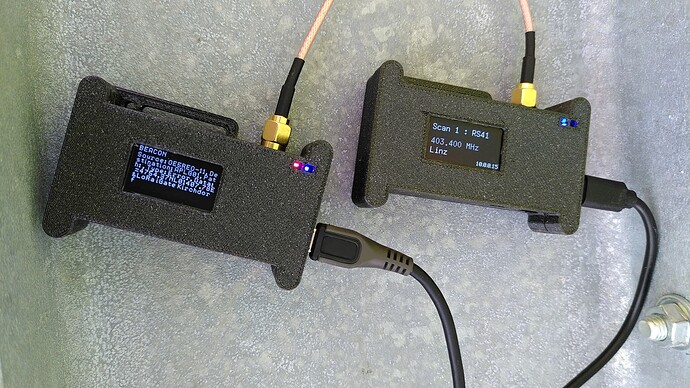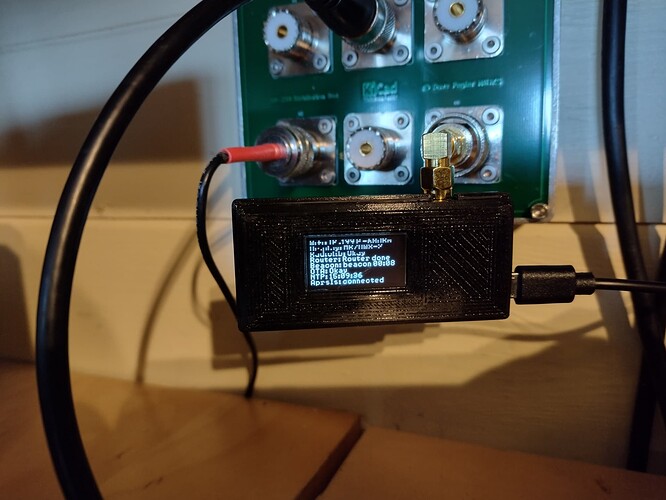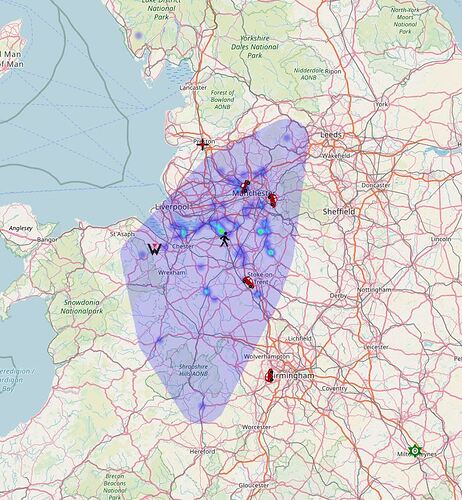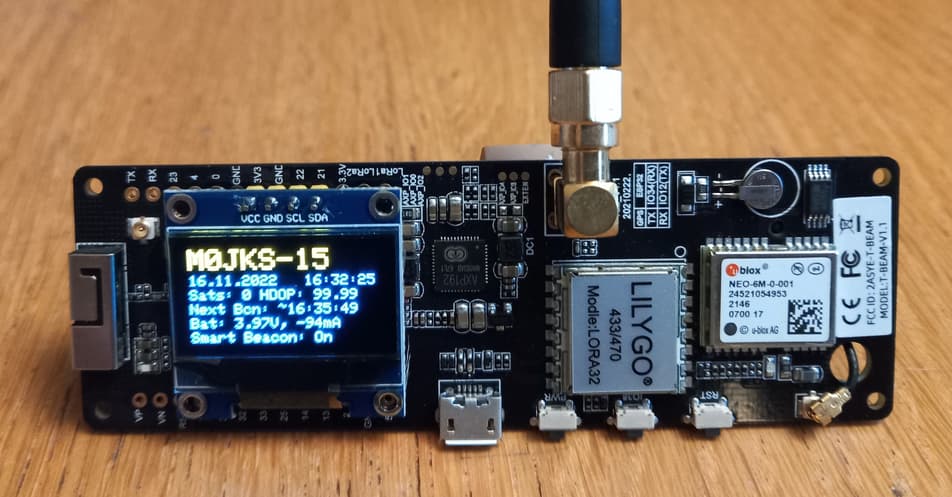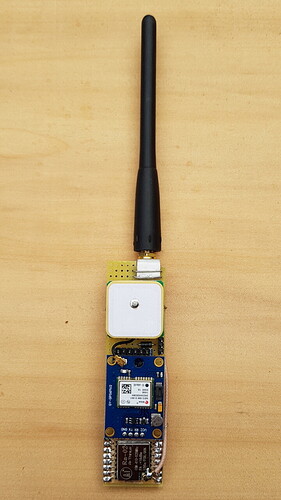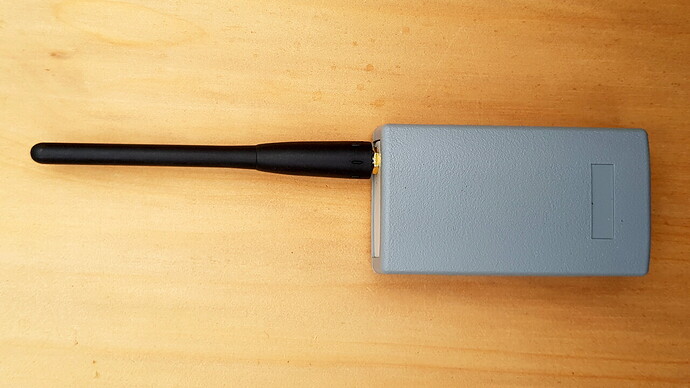Hi Paul.
It was the Tech Minds video on Youtube that got me interested in APRS over LoRA.
There are two LoRA modules made by LilyGo; one that’s used for the iGate/digirepeater:
https://hamparts.shop/lilygo-ttgo-lora32-gateway.html
and the other as the tracker:
https://hamparts.shop/lilygo-ttgo-t-beam-tracker.html
The latter has GPS and a 18650 battery - which lasts for several days. The iGate doesn’t need these so is a tad smaller.
The reason I chose these modules was that Peter Buchegger (OE5BPA) had done all the hard work in getting them up and running on APRS. The github repository is here: peterus (Peter Buchegger) · GitHub.
To get the software for the iGate module do the following:
git clone https://github.com/lora-aprs/LoRa_APRS_iGate.git
and for the tracker:
git clone https://github.com/lora-aprs/LoRa_APRS_Tracker.git
As the instructions in the git repos say, to compile the code for both the iGate and tracker you need to install Microsoft’s Visual Studio Code,and then the platformio IDE. Follow the instructions here :
A professional collaborative platform for embedded development · PlatformIO
I’m a Linux hacker, so having anything to do with anything that comes out of Redmond makes my uneasy, but actually it worked fine. I installed
https://code.visualstudio.com (for Linux) and then followed the instruction in the above post to install the PlatformIO IDE. I’m sure the Windows install would work just as well if you prefer using that.
You need to do this as the configuration needs to compiled into the final image. Attached is an example of the is-cfg.json json file that you need to edit to supply various bits of information like callsign, WiFi SSID, GPS co-oridinates and various other parameters. Here’s a screen shot of mine :
Instructions on how to compile (which buttons to press in the IDE) are in the above URLs. Once compilation is complete, plug the APRS node into a USB socket and follow the instructions on how to download the image to the node.
Dave
